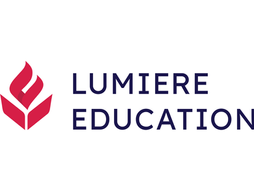Stanford Summer Humanities Institute - Is it Really Worth it?
Summer programs are a great way to prepare yourself for college, especially if you’re an ambitious and curious high school student: they give you a glimpse of college life, you get to interact with students and professors, and they reflect demonstrated interest in a subject on your CV.
If you decide to attend a summer program and are interested in the Humanities, then we highly recommend you check out the Stanford Summer Humanities Institute. Stanford’s Arts and Humanities department is ranked #1 globally, and what sets its summer program apart from others is its unique courses and focus on critical thinking. Note that the following information is based on the most recent program, with dates subject to change but generally similar from year to year.
What is the Stanford Summer Humanities Institute?
The Stanford Summer Institute is an intensive, three-week residential program focused on helping students make greater sense of the world they live in. The program explores topics in the humanities to help students “understand the past, question the present, and imagine the future.” It helps students develop essential skills like critical thinking, academic writing, and expressing complex arguments.
It is important to note that Stanford places special emphasis on learning and developing young people’s ability to think independently and critically. To this end, the program is non-credit and non-graded.
Is the program prestigious?
The program is moderately prestigious. Stanford hosts the program, which lends it a lot of prestige. However, the tuition fees are quite high ($8,250) and its less stringent application process takes away some of its prestige.
What can I study at the Stanford Summer Humanities Institute?
Stanford offers eight curated courses for you to choose from:
The Greeks and Beyond, which examines ancient Greek and modern and contemporary philosophy
Revolutions, which studies the socioeconomic and cultural forces that can create an uprising
Ancient Rome and Its Legacies, which compares Ancient Rome to Western civilization today
The American Enlightenment, which considers the years spanning from 1770 to 1820 and their impact on American and European societies
Racial Identity in the American Imagination looks at how racial identity has been constructed throughout American history
Film and Philosophy, which looks at film as a unique method of communication
Who Owns the Past? … debates the ownership, conservation, and access to African art in Western spaces.
Magic Realism: One Hundred Years of Solitude is a deep dive into this style of literary fiction, examining its origins and impact on literature
You can choose up to three courses at the time of applying but study only one if you are selected. The Stanford admissions office reserves the right to assign selected candidates courses based on their profiles.
The courses are taught by Stanford’s excellent faculty, all leading scholars in the field of humanities. You can see the list of professors here. Teaching assistants, usually graduate students, will help with coursework.
Coursework for the program includes lectures, readings, group work, and other assignments. You will be given a “college-level workload,” which will include a significant number of assignments to complete outside the classroom. At the end of the program, you have to produce an original research project.
What does the program cost?
Tuition is $8,250, and a $65 application fee. The tuition includes housing, food, course material, academic trips and weekend field outings, and transportation between Stanford and the San Francisco International Airport, if required. Stanford offers financial aid to deserving students.
Who can apply?
The Stanford Summer Humanities Institute is selective and competitive. Stanford says students who demonstrate “overall academic excellence” are usually admitted into the program.
The summer institute is open to U.S. and international students in grades 10 and 11. To apply, you have to submit the following:
Academic records
Work sample(s), which must be a school assignment completed in the last year. These can include essays and/or research papers. If possible, Stanford recommends you submit a sample that shows graded work and where the prompt is given.
Recommendation from an English, History, or Social Science teacher
Video essay (optional) to be shared with the admissions committee, where you share your motivation to participate in the program. Stanford strongly recommends you submit a video essay if you attended a school where English was not the primary language of instruction.
When do applications for the Humanities Institute open?
The deadline to submit your documents will likely be February 1, and you will receive a response by mid-April.
The program has two sessions: the first three-week session runs from the last week of June to mid-July, and the second session starts from mid-July till the first week of August.
What are the pros and cons of applying for the program?
Pros
Stanford’s Arts and Humanities department is ranked #1 in the world. When it comes to studying the humanities, there’s arguably no better place to be. If selected into the program, you will have the unique and enviable opportunity to study at the world’s best Humanities departments at a leading university. If you choose to study Humanities for your undergraduate degree — be it at Stanford or elsewhere — having attended the Summer Institute will help your application stand out and show your demonstrated interest in the subject.
The program is highly selective The program’s selective nature means only a few make it through. While data on acceptance rate and cohort size is unavailable, it’s worth noting that Stanford’s overall acceptance rate is 4% and its humanities department is ranked #1 globally, making admissions competitive.
The immersive nature of the program The program is residential, and students live in the same residencies as undergraduate Stanford students. A typical daily schedule, apart from lectures, includes excursions, games, and other informal activities with undergraduate students and professors.
You can study unique courses curated for high school students Topics like the American Enlightenment, race in the U.S., and the repatriation of U.S.-held artifacts are uniquely curated for high school students, introducing them to some of the debates prevalent in the Humanities. By studying only one course for the duration of the program, students will be able to undertake an in-depth examination of issues and produce a paper at the end of the course.
Stanford offers financial aid, making the program accessible to a wider applicant pool Stanford wants their summer programs to be more accessible to deserving students and waives students' tuition fees based on a need basis. International students can also apply for financial aid. You can read more about the financial aid offered here.
Cons
The program is expensive if you are not offered financial aid $8,250 is a lot to pay, though it must be noted that the program is residential and covers the cost of food and travel in the San Francisco area. For comparison, Harvard’s four-week residential summer programs cost around $5,500.
The program’s prestige is limited While you would definitely benefit from being associated with the world’s best humanities department, the program itself is quite expensive and its application progress is not that rigorous when compared to other highly prestigious and fully funded summer programs (for example, the Anson L. Clark Scholars Program).
Non-credit, non-graded program While Stanford’s absolute focus is on developing critical thinking, it may not be for everyone. Highly ambitious high school students may want their work to be graded and receive credits that give them a headstart on college coursework.
The program runs for only three weeks Though the program is intensive, three weeks may not be sufficient time to adequately engage with a subject and immerse yourself in college life.
What do we think of the Stanford Summer Humanities Institute?
If you’re ambitious and determined to pursue a degree in the Humanities, then we recommend you apply to the Summer Humanities Institute. Stanford’s Humanities department is the best in the world, the coursework is unique, and faculty members lead the teaching. However, if you find the program to be too expensive, or if you want to attend a program that offers credits, then consider other Ivy League universities, which also offer prestigious summer programs.
If you’re looking for the opportunity to do in-depth research on various topics in the humanities, you could also consider applying to one of the Lumiere Research Scholar Programs, selective online high school programs for students founded with researchers at Harvard and Oxford. Last year, we had over 4000 students apply for 500 spots in the program! You can find the application form here.
Kieran Lobo is a freelance writer from India, who currently teaches English in Spain.
Image Source: Stanford logo





